Tibetan Thangka Painting
- Lynn
- Last Updated : 04/02/2025
Tibetan Buddhism is a religion that is replete with fantastic and mysterious symbolism. But one symbol that would readily catch your eyes during a Tibetan religious festival is the Tibetan Thangka. But what is this Tibetan Thangka and what is its significance in Buddhism?
A Thangka is a scroll painting used for worship in Tibetan Buddhism. As a scroll painting and a work of art, the Thangka is always appealing. In fact, it would readily tantalize your eyes with its brilliant colors and elaborate scenes.
As a form of art and religious symbol, it is basically unique to Tibetan Buddhism for it is not just a religious symbol. It also tells something about the unique history, culture, policies, social life, practices, and many other aspects of the lives of the Tibetan people.
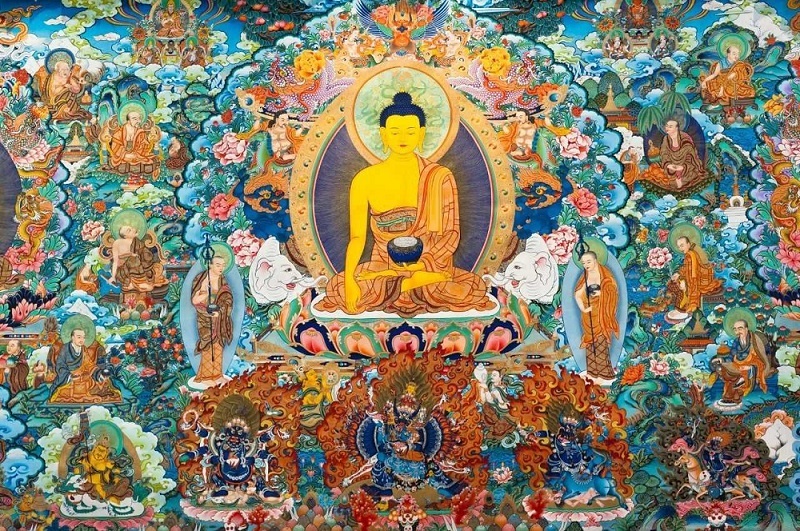
Content Preview
Where did the Thangka Originate?
The origin of the Thangka is not easy to trace. It would require us to go back in time, back to the Neolithic age in the Tibetan Plateau. The Thangka could be traced back to the Mogao caves along the Silk Road. Inside these caves, the earliest surviving paintings of Tibetan origin were found. These Tibetan paintings were set on the walls of the caves, though some of them were set on cloth.
From these early forms of Tibetan paintings evolved the traditional scroll paintings, which were later perfected during the Tubo Dynasty. The Tubo Dynasty was a period of powerful rulers in Tibetan History. This Dynasty started when a great Tibetan ruler by the name of Songtsan Gambo united the 10 separate tribes of Tibet during China's Tang Dynasty (618-907).
Based on an old legend, however, Songtsan Gambo, a Tubo King, started the tradition of the Thangka. Prompted by divine guidance and using the crimson blood that was oozing down his nose, he began to paint Bailamu. Thus, the first Thangka was created. Legend also said that the Living Buddha hid the first Thangka within the abdomen of the statue of Bailamu.
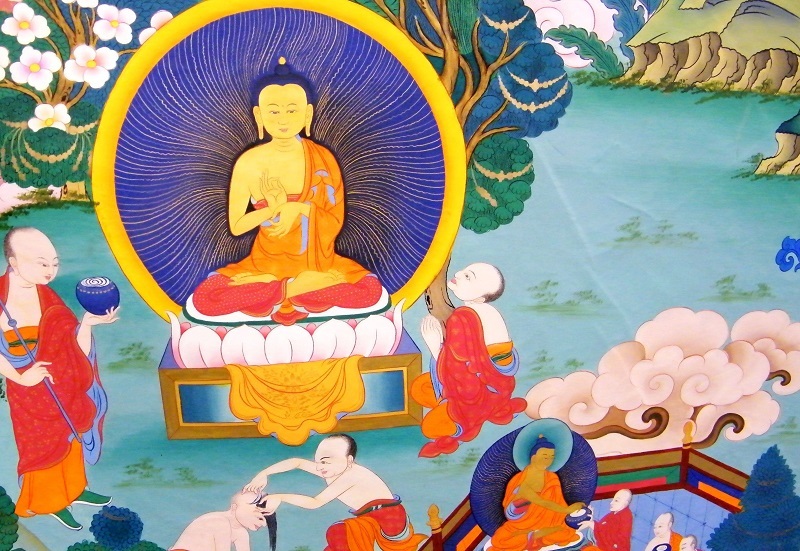
Earliest Known Murals of Thangka
The earliest known murals of Thangka could be traced back to the middle of the seventh century. However, the Thangka-making tradition should have been practiced earlier. This is because during the reign of Langdarma, the art of creating Thangka was radically suppressed. This suppression could have been the reason behind the lack of extant Thangka murals during the periods earlier than the seventh century.
There are, however, some extant Thangka murals from the Song and Yuan Dynasties, especially, from the time of the Fifth Dalai Lama.
Before the Lobsang Gyatso administered by the Fifth Dalai, most Thangkas were best illustrated by some isolated works of folk artists. The Thangkas made by these artists were dedicated to Tibetan monasteries.
Yet, everything changed during the administration of the Fifth Dalai Lama, when a specific institution was assigned to administer the making of Tibetan arts.
Soon after, the art of Thangka reached a high level of artistry that gave birth to the creative period in Tibetan history.
Afterward, during the reign of the Seventh Dalai, Kelsang Gyatso, he set up the Imperial Art Academy. This further bolstered the art of making Thangka, giving birth to the most influential type of Thangka—the Mengtang.
Different Sizes of Thangkas
Thangkas vary in size. In fact, you will see some fairly small thangkas like a 20 by 50cms thanka. There are also some very large thangkas. When saying "large", we mean they are truly huge. These Thangkas may have dimensions of sixty feet or more across and twenty feet or more in height. These Thangkas are often unveiled during important festivities of the Tibetan Calendar.
Types of Thangkas
Thangkas can be categorized based on two factors: how it is wrought or done (technique) and which materials it is made of. Based on these two categories, Thangkas can be categorized into two groups: the painted thangkas and the embroidered Thangkas.
Thangkas are also further categorized into silk appliqué (ornamental needlework), painted in colors, block prints, black background, gold background, red background, and embroidered ones. Furthermore, Thangkas can also be grouped according to content, size, and materials.
How are the Thangkas Created?
There are several stages or steps in the making of a Thangka. These steps sometimes may take several months or even several years to complete. Additionally, the materials used for painting Thangkas include colors that are usually taken from local Tibetan mines. These materials may include agate, gold, silver, cinnabar, saffron, ocher, rhubarb, and many other minerals.
To create the ideal pigment for painting, these materials are ground several times. Afterward, a minimal amount of cattle bile in the form of gel is mixed with the ground materials. This makes the materials even more durable and long-lasting. Thus, you can surely expect the color of the Thangka to withstand the test of time.
The creators of Thangkas carefully choose the canvas for the Thangka. They generally choose light-colored canvas. They also make sure that the canvas is neither too hard nor too thick. The reason for this is that too hard or too thick canvas can make the paint peel off and can cause cracking and wrinkles on the canvas.
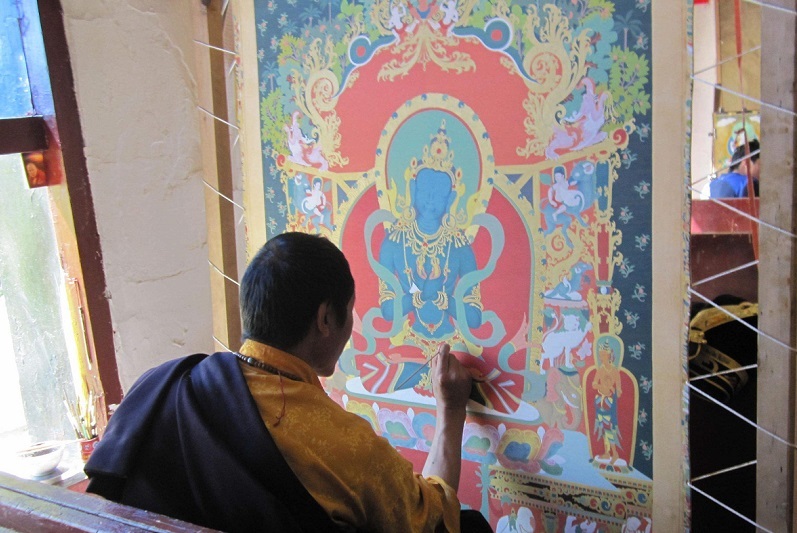
How Do Painters Prepare the Canvas?
Painters prefer fine cotton cloth and pure white poplin. They also may opt for white silk. The large thangkas are mostly separate fabrics that were sewn together to form those gigantic thangkas. However, you would seldom notice the stitches because these stitches were finely crafted.
Some thangkas are sewn on a wooden frame. Each side of the canvas is then pulled away to tighten up the canvas. Once the canvas has been prepared, the painters first apply a layer of glue to the canvas. Then, they let the thin layer of glue dry.
Afterward, they apply a layer of paste made of lime on top of the dried glue layer. Then, when the second layer dries up, they then rub the canvas again and again with a shell or a glass until the cloth is totally hidden from sight. Once the cloth is completely hidden from recognition, the canvas is all set for sketching and painting.
How do Painters Create the Scenes on the Thangka?
When the canvass is all set, they begin to draw a rough sketch of what they want to paint. Then, they apply the corresponding colors to the sketch. They only apply a single color first, beginning with the light color. Then, they proceed with the gold color. Afterward, they focus on the details of the scene specifically on the details of the face of Buddha.
It is good to note that the greatness of a thangka depends on whether the face is well-crafted or not. Thus, a tradition has developed behind the painting of the face of Buddha. This tradition states: “You should carefully choose a day that is ideal for painting the face.” This is because on some days, you are not in a good mood or you are not inspired. Thus, you should only paint the face on the day when you are inspired.
Many old Thangkas usually bore inscriptions on their back. These writings were usually mantras pertaining to the deity that was depicted on the scene. In some cases, the inscriptions referred to the owner of the Thangka or the painter of the Thangka in very few cases.
The scenes on the Thangka generally follow a geometric pattern. They follow a highly systematic grid of intersecting lines and angles. Thus, the painters of Thangka should also be highly skilled and artistic to perfectly outline the scenes in a geometric way.
Understanding the Thangka’s Symbolism
Thangkas are rich in symbolism and these symbols often allude to the great scenes in the lives of the deities. Moreover, these symbols are based on the strict guidelines outlined in Buddhism's sacred scriptures. Thus, those who are commissioned to create the Thangkas are also masters of Buddhism or have enough knowledge and understanding of Buddhist traditions.
Tibetan Thangkas mostly shows Nirmanakaya. But what is this Nirmanakaya?
Nirmanakaya refers to the trikaya's third aspect and the corporeal manifestation in space and time of Buddha. In other words, it pertains to the dimension referred to as the ceaseless manifestation. Thus, Thangka exemplifies the qualities of Buddha and the physical body of Buddha.
The Thangka as a Meditational Tool
Since the Thangka depicts the physical manifestations and the distinctive qualities of Buddha, it readily becomes a meditational tool for those who would like to reflect on the life and existence of Buddha. It is also believed that believers who meditate on the scenes and depictions of the Thangka gain merits and further make progress in their spiritual quest.
In the past, there were countless Thangkas that were created. Some of the most popular and colorful Thangkas ever created are the following deals with the following scenes and concepts:
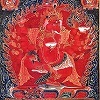
Wrathful Deity/Protector
Vajrapani is the red wrathful protector. Hence, the Thangka that depicts the red wrathful protector showcases the wrathful and ferocious qualities of the deity. Thangka—which depicts this deity—illustrates the symbolical stamping of Maya or illusion or any attachment to earthly illusions.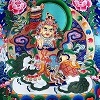
The Benefactor Deity/Protector
The benefactor deity refers to Vaishravana. Vaishravana is considered to be a semi-wrathful deity who readily provides prosperity and wealth to his devotees. This deity is often depicted as someone who is riding a very fair lion while holding on his hand a black mongoose that spews jewels.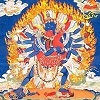
The Meditational Deity
The Meditational Deity called Chakrasamvara is usually depicted in this type of Thangka. Chakrasamvara is usually depicted with great accouterments that depict his divine powers.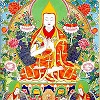
The Historical Figure
Thangkas that depict the historical teacher Tsongkhapa show the teachings of this master of Buddhism and his lineage. This Thangka also depicts blessings coming down from heaven.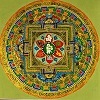
The Mandala
A Mandala usually showcases the two-dimensional form of the three-dimensional space that is inhabited by the Deities. Mandala also outlines the meditative path that a practitioner should take in order to connect to the deity.Email response within 0.5~24 hours.


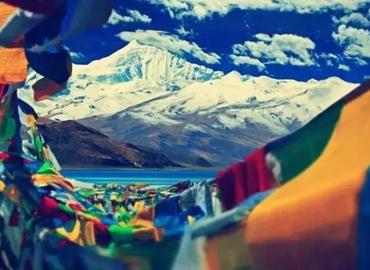
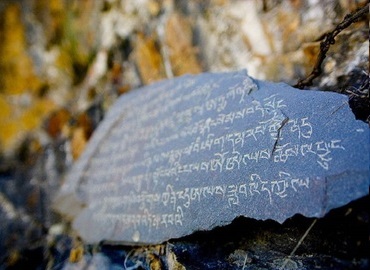
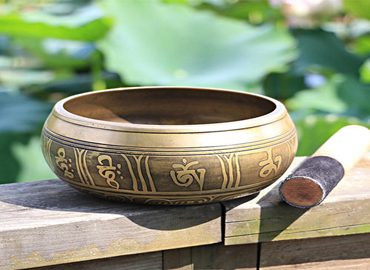
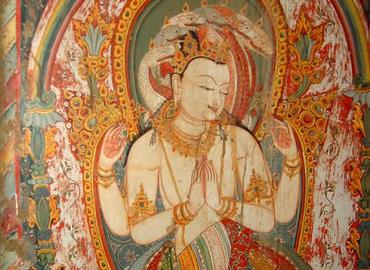

Typically Asked Questions from Our Clients
Asked by Lisa***
Is there a book with excellent pictures and interpretations of the iconography in Tibetan thanka art? I found a stunning piece in an antique store and I'm trying to find out some of its meanings. I will never get tired of looking at it and for that reason alone it seems like a piece of meditation art, but I would love some help. perhaps you even know of someone who could look at a photograph of it and help me understand? Thank you. Lisa
Dear Lisa,
There're various Thangka interpretations books in Tibet but I have no idea which Thangka painting you are mentioning. We'd like to provide help. Please specify the Thangka painting or just send me the image.